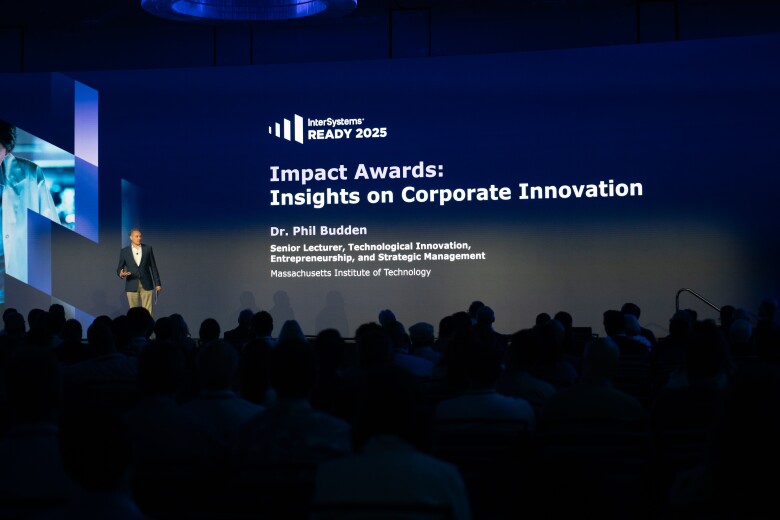Outside the office, I play bass guitar. There’s something to a great bassline – it’s the foundation of so many great songs, around which all the other elements just fall into place. In a way, that’s what a great data platform does: it creates the architecture and environment that unifies everything you’ve got. It’s the foundation underlying successful digital transformation.
Since we released the initial version of InterSystems IRIS back in January 2018, we’ve seen strong adoption from our customers and partners. And we’ve been working closely with them as they build out their next generation applications on InterSystems IRIS. I’d like to share the top trends we’re seeing from our customers, and how they have been shaping the capabilities in our latest release of InterSystems IRIS data platform, version 2020.1.
Digital transformation. It may be an overplayed one, but digital transformation is a top request from most if not all our enterprise customers. These projects require integrating disconnected data and application silos, both inside and outside the firewall – and connecting hundreds or thousands of disparate silos is hard. We are continuing to make it even easier to integrate silos and create streamlined data-driven processes that connect them, including providing full-lifecycle API management capabilities to build and manage private and public APIs. In fact, one of our customers – a third party logistics provider for retail companies with operations in more than 40 different countries – is now able reduce the time to integrate and streamline new customers’ supply chains by 65 times and eliminate “blind spots” across their systems.
Data and analytics. Data is everywhere now, but organizations still struggle to find the best ways to use it to improve their businesses. This growing need to leverage more data in new ways requires the ability to scale; it requires the ability to more easily understand the meaning and patterns hidden away in the data; and the ability to perform more types of analyses – including machine learning and natural language processing. And many of our customers want to take these learnings and incorporate them into their real-time business processes, with a “virtuous cycle of continuous improvement” as applications run in production and new data is generated, analyzed, and incorporated back into the processes — without having to move the data around among different environments.
Performance. The “pocket” for InterSystems IRIS is powering real-time, highly scalable applications. Many of our customers are building applications that ingest data (e.g. FIX messages in financial services, MQTT messages from devices, etc.) at very high data ingest rates. At the same time, they run real-time analytics (SQL queries, machine learning algorithms, business intelligence, business rules, etc.) on both the incoming and historical data. These kinds of applications simultaneously require very high performance for both transactions and analytics, without sacrificing performance for either type of workload, with high efficiency, high reliability, and at low cost. This is where InterSystems IRIS truly shines, and we’ve done a lot more work here in the latest release to further distance IRIS from the competition. In fact, in their latest Critical Capabilities for Operational Database Management Systems report, Gartner recently wrote that “InterSystems received the highest score for high-speed, high-volume processing of all products.”[1]
Productivity. We at InterSystems think a lot about how to make developers and operations teams more productive. This means making it easy for developers to build applications in their programming language of choice (Java, Node.js, Python, .NET, etc.), and supporting industry standards like Kubernetes, FHIR, and Visual Studio Code. We’re also making it easier for our customers to migrate existing applications from other technologies so that they can take advantage of the capabilities, performance, and efficiency of InterSystems IRIS without rebuilding their applications from scratch.
Cloud and Deployment. While the majority of new deployments are happening in the cloud, many of our existing customers and partners are running their production applications on premises or in a private cloud. For us, that means that we need to continue to provide enhancements for on-premises deployments while making it even easier to run our software in any of the major public clouds, in hybrid (cloud-cloud, cloud-on premises) configurations, to move existing on premises applications to the cloud, and to move from one cloud to another — without making any changes to the applications.
So, it’s time for you to compose your own symphony with InterSystems IRIS 2020.1. We’ve made it even easier for our customers and partners to build high-performance, machine learning-enabled applications that connect data and application silos, and we continue to be excited to collaborate with our customers and partners as they build these kinds of applications with our software.
Over the next few months, our engineers and product managers will be posting here about these and other trends, and how the new capabilities in InterSystems IRIS 2020.1 are helping to enable them.




































